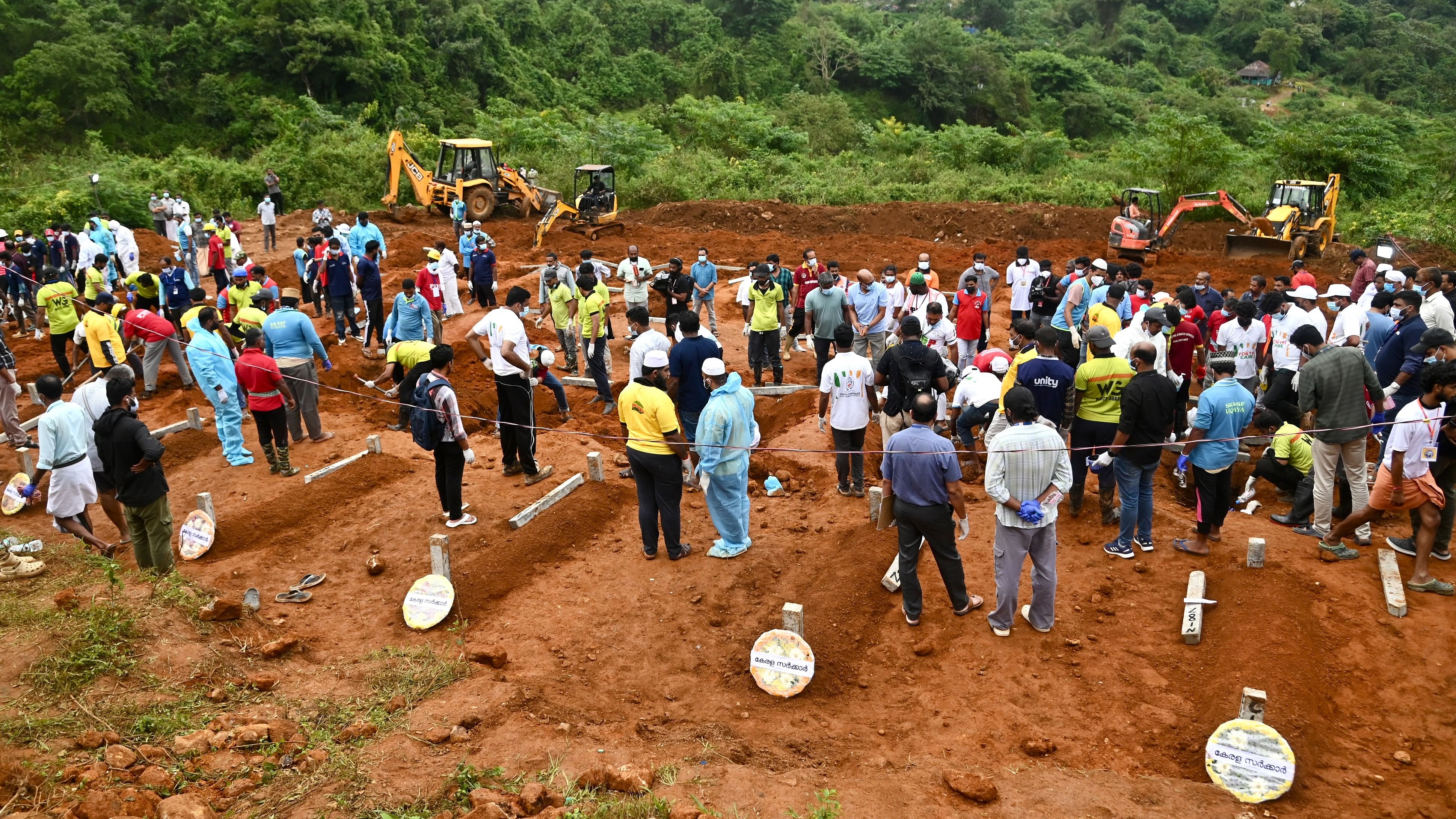
Rescuers pull out a body of a victim in Mundakkai, Wayanad,.
Credit: DH File Photo
Following the devastating landslide in Kerala’s Wayanad, rescue personnel pulled out bodies of victims, including parts of human bodies, from the slush at Mundakkai and Chooralmala.
At the end of the week-long rescue operation, the search operations team recovered 231 bodies while 118 persons were declared missing.
The unidentified bodies and body parts—including severed limbs and dismembered remains—were assigned specific numbers for future identification, and samples were taken for DNA testing. The 421 samples were then sent to the Regional Forensic Science Laboratory in Kannur, where forensic experts began the task of matching names to the body parts recovered from the tragedy.
A report in The Indian Express detailed how the forensic experts collaborated to identify the bodies using DNA clues
Dr Pradeep Saji K, director at the state Forensic Science Laboratory, told the publication that it was a major task for the forensic team to test the huge number of samples in a short period of time.
The lab moblised the people from other districts and worked day and night to complete the testing process. The samples were kept in a cold room at the lab with no cross contamination, Dr Saji told IE.
Bushra Beegum, who is a joint director at the lab in Kannur, told the publication that most of the samples for DNA testing were taken from bones of unidentified bodies and, in some cases, the samples were taken from teeth and body tissue. Beegum explained that extracting the DNA from the bones is the most time consuming task as the bone has to be cleaned to take out the bone marrow which is a skilled, delicate, manual job.
According to the report, one of the many challenges that they faced included the requirement of at least .1 nanogram of DNA to create a profile. However, many samples that were collected from the river were putrefied and did not have the minimum quantity of DNA that is needed for sequencing.
The publication reported that since all the victims were from a particular place ( Mundakkai and Chooralmala), there was a high possibility of inbreeding which might have taken place over the generations.
"Normally, of the 46 chromosomes of a person, four chromosomes are unique to that person. But in many samples tested from this particular region, a decrease in the differences between their chromosomes were noticed. This is mainly due to inbreeding, which happens when distant relatives marry," said an expert familiar with the work at the Kannur forensic lab told the publication.